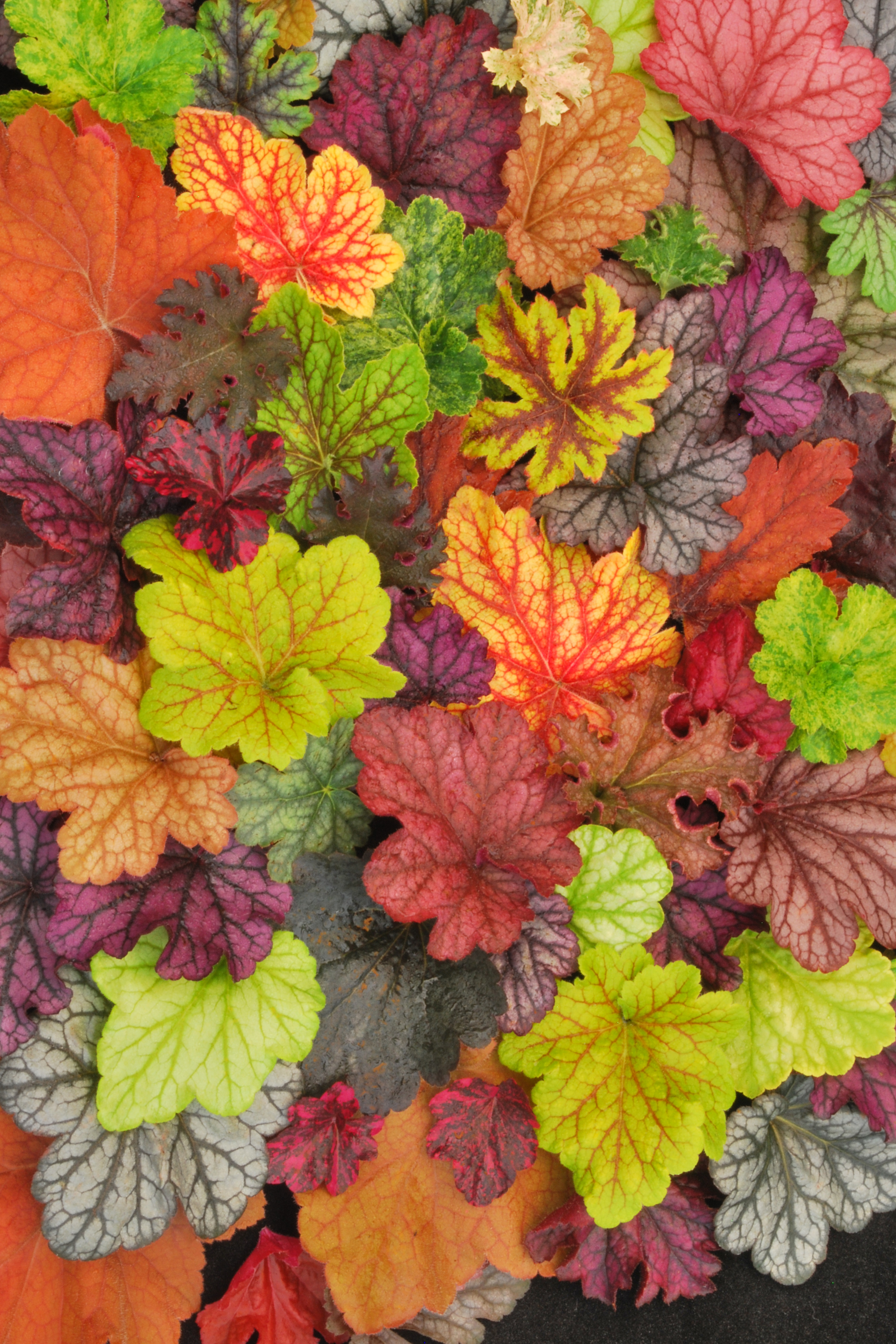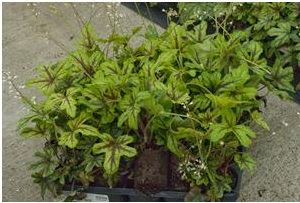Shop by Category
Shop by Brand
Shop by Brand
Heucherella
Best of Both Worlds - Beauty & Versatility
Heucherella, often called Foamy Bells, is a delightful hybrid plant that combines the best features of its parent genera, Heuchera (Coral Bells) and Tiarella (Foamflower):
- Intriguing Foliage: Heucherella inherits the captivating foliage colors and patterns of Heuchera, offering a wide spectrum of shades like bronze, gold, green, burgundy, and silver. However, their leaves often exhibit more intricate lobing and unique shapes, sometimes with deeply cut or lacy edges, reminiscent of Tiarella.
- Attractive Flowers: Unlike Heuchera, which are primarily grown for their foliage, Heucherella produces more prominent and showy flowers. They feature delicate, airy spikes of small, star-shaped blooms in shades of white, pink, or cream, resembling the "foam" of Tiarella. These flowers add an extra dimension of beauty to the plant, especially in late spring and early summer.
- Extended Bloom Time: Heucherella often boasts a longer blooming period than many Heuchera varieties, providing weeks of delicate floral interest.
- Versatile Texture and Form: The combination of interesting foliage shapes and the airy flower spikes creates a unique and appealing texture in the garden. Heucherella works well as ground cover, in borders, containers, and woodland gardens.
- Adaptable and Relatively Low Maintenance: Like their parent plants, Heucherella are generally adaptable to various growing conditions and are relatively low maintenance once established. They are also generally pest and disease resistant.
- Good Shade Tolerance: Heucherella typically thrives in partial to full shade, making them excellent choices for those shadier spots in your garden where other colorful plants might struggle.
Follow these simple steps to successfully plant and grow your Heucherella:
Choosing the Right Location:
- Light: Heucherella generally prefer partial shade (4-6 hours of dappled sunlight or morning sun and afternoon shade). They can tolerate more shade than many Heuchera varieties. In the climate of Milton, Georgia, providing protection from the intense afternoon sun is usually beneficial.
- Soil: Heucherella thrive in well-draining soil that is rich in organic matter. Amend heavy clay soil with compost or other organic material to improve drainage.
- Spacing: Space your Heucherella plants according to their mature size, typically 10-15 inches apart.
Planting Your Heucherella:
- Timing: The best time to plant Heucherella is in the spring or fall when the weather is mild.
- Dig the Hole: Dig a hole that is twice as wide and just as deep as the plant's root ball.
- Prepare the Plant: Gently remove the Heucherella from its container and loosen any circling roots.
- Planting: Place the plant in the center of the hole, ensuring that the crown (where the stems meet the roots) is at or slightly above the soil level.
- Backfill: Fill the hole with the amended soil, gently firming it around the base of the plant.
- Water Thoroughly: Water the newly planted Heucherella deeply to settle the soil and help the roots establish.
Growing and Caring for Your Heucherella:
- Watering: Water regularly, especially during dry periods, until the plants are established. Once established, they are moderately drought-tolerant but appreciate consistent moisture. Avoid overwatering.
- Mulching: Apply a layer of organic mulch (such as shredded bark or leaf mold) around the base of the plants to help retain moisture, suppress weeds, and keep the soil cool. Keep the mulch away from the crown.
- Fertilizing: Heucherella are not heavy feeders. A light application of balanced liquid fertilizer in the spring is usually sufficient. Avoid excessive fertilization.
- Deadheading: Remove spent flower stalks to encourage a tidier appearance and potentially prolong blooming.
- Division: Divide mature Heucherella plants every 3-4 years in the spring or fall to maintain vigor and create more plants.
- Winter Care: Heucherella are generally hardy and do not require extensive winter protection. A layer of mulch can be beneficial in particularly harsh winters.
- Pest and Disease Control: Heucherella are generally resistant to pests and diseases. However, keep an eye out for occasional issues like slugs, snails, or fungal problems in overly wet conditions. Address any problems promptly.
By following these guidelines, you can enjoy the unique beauty and charm of Heucherella plants in your garden!


Heucherella plants thrive in a variety of conditions, but they do best in organically rich, well-drained soil with a neutral pH. They prefer partial shade, especially in the afternoon, but can tolerate full shade or full sun depending on the climate. In colder climates, they perform well in full sun, but in hotter climates, they need afternoon shade to prevent scorching.
These versatile plants can be used in a variety of settings, including borders, containers, rock gardens, and mass plantings. They are also salt-tolerant and can be used as cut flowers or foliage. In areas with mild winters, heucherellas are evergreen. In colder climates, they may need winter mulch to prevent root heaving.
Heucherella is a hybrid cross between Heuchera and Tiarella, resulting in a plant that is generally more compact and delicate in appearance than its Heuchera parent.
